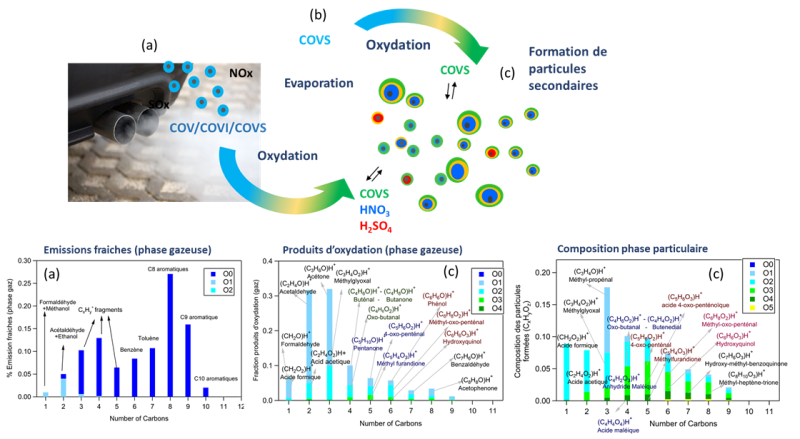Follow us on Google News (click on ☆)

Illustration image Pixabay
Atmospheric pollution from fine particles related to road transport is more than ever a key societal issue. However, it is clear that the contribution of transportation modes to the production of atmospheric particles is still poorly understood.
There are several reasons for this. On one hand, reliable methods and protocols for measuring these emissions are difficult to establish. On the other hand, the formation of secondary aerosols, produced in situ in the atmosphere from exhaust emissions, remains to be characterized. It is currently impossible to accurately represent secondary organic aerosols in air quality models or to understand their impact on human health and climate.
In this context, scientists from the Environmental Chemistry Laboratory (CNRS/Aix-Marseille University) focused on the photochemical processes that exhaust gases from gasoline vehicles undergo once released into the atmosphere.
Their original approach combines analysis of emitted gases (on test benches) and physico-chemical characterization of their evolution in an 8 m3 environmental chamber dedicated to measurements. The scientists were thus able to recreate atmospheric conditions by finely controlling the chemical composition, humidity level, temperature, and solar radiation.

Atmospheric evolution of vehicle emissions
(a) emission of pollutants (gas and particles);
(b) evaporation of certain semi-volatile organic compounds (SVOCs);
(c) gas-phase oxidation products and new particles or condensation of the oxidized compounds onto pre-existing particles.
© Barbara D'Anna
Primary exhaust gases that contain volatile organic compounds (VOCs) from fuel combustion, nitrogen oxides, and ammonia, are directly introduced into the environmental chamber. This complex mixture is oxidized and new fine particles are rapidly formed. Measurements using Proton-Transfer-Reaction Time-of-Flight Mass Spectrometry (CHARON-PTR-ToF-MS) have elucidated, for the first time, the chemical composition of these particles.
Quantifying and identifying these secondary particles produced by direct injection gasoline vehicles will improve the assessment of their environmental impact on air quality and health. The teams are now considering adapting this innovative analysis method to monitor the formation of secondary particles from other pollution sources such as maritime transport, wood heating, etc....
Editor: CCdM
Reference:
Evangelia Kostenidou, Baptiste Marques, Brice Temime-Roussel, Yao Liu, Boris Vansevenant, Karine Sartelet & Barbara D'Anna.
Secondary organic aerosol formed by Euro 5 gasoline vehicle emissions: chemical composition and gas-to-particle phase partitioning
Atmospheric Chemistry and Physics 2024
https://acp.copernicus.org/articles/24/2705/2024/